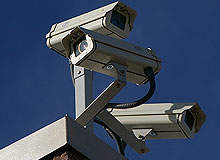
Striking the Right Balance: Security in Hospitals
Security is a major concern for any public institution, but hospitals and other medical centres present planners with a unique challenge. Beyond the ethical responsibility to keep patients and staff safe, the abundance of expensive medical equipment and potentially harmful drugs also puts medical facilities at a heightened risk of theft, whether pre-planned or a simple act of opportunism. Reports into hospital security have raised concerns that criminals regard hospitals as “supermarkets without tills”.
Despite this risk, hospital security must sit alongside another equally important priority for healthcare facilities: the need for a friendly, calming and open design that makes patients and visitors feel at ease. These two concerns often make for uncomfortable bedfellows.
Managers who want to achieve a good balance between them are increasingly making use of cutting-edge new technologies as well as tried-and-tested security techniques.
The allure of high-tech
Hospitals have tended to avoid potentially invasive security measures, and have therefore been generally slow to adopt new technologies. However, many experts believe that the intelligent application of high-tech devices holds the key to creating a resilient security network that is virtually invisible to patients and visitors.
Real-time locating systems (RTLS) have been steadily gaining traction as an unobtrusive method of tracking high-level hospital equipment. It uses wireless signals to transmit the object’s location to a server-based software application, meaning that it can be monitored in real-time.
These devices can provide peace of mind for hospitals that have been forced to spend money replacing stolen hospital property. California’s Tri-City Medical Center saved nearly $50,000 after RTLS systems prevented two expensive vacuum-assisted closure devices from accidentally leaving the facility with patients.
Controlling access is a particularly troublesome area for hospital security managers as staff usually place higher priority on being able to move through the hospital quickly in an emergency. New technology, if well-implemented, can offer a more elegant solution than a long, unwelcoming series of locked doors.
Modern access control systems can also provide a number of in-built advantages, but managers should keep a few things in mind when assessing potential providers. For example, large hospitals with complex requirements will need access control systems with scalable security protocols, so that door scanners and ID cards recognise staff seniority, areas of practice and likely hours of work. This allows a high level of access control for a hospital’s inner wards whilst keeping the building’s open design and emergency response readiness.
Flexibility should also be a priority, especially as hospital staff may frequently switch between different areas of a hospital. King’s College Hospital NHS Foundation Trust in London recently upgraded its system with Access Control Technology’s ACTpro 3000 controllers – it now receives around 150 requests for access rights changes every day.
Other innovations making their way into hospitals include high-definition integrated camera/playback systems, lone-worker protection devices and weapons screening. Leicester Royal Infirmary in the UK is even trialling the use of miniature digital cameras fixed to employees’ bodies to gather evidence against visitors who subject staff to verbal abuse.
From high-tech to no tech
While cutting-edge technology plays a significant role when securing a hospital building, effectiveness will always be limited unless the building can be adapted – and staff taught – to make use of it.
With costs for sophisticated security systems still high, it is important to take comparably inexpensive steps to ensure that all staff, both security and medical, are aware of security issues. After all, access control technology is of little use if a physician politely holds a door open for an unauthorised person to pass through.
The cornerstone of maintaining a safe hospital is a comprehensive security plan that is well communicated to all levels of staff. Hospital managers should ask themselves whether they have well-defined protocols in such diverse areas as access rights, response to assaults or threatening behaviour, high-risk areas or time periods and CCTV monitoring.
After a well-considered security plan has been set out, its importance should be consistently expressed to staff. Having a security-aware workforce is an incredibly cost-effective way of reassuring both staff and patients that there are security counter-measures covering even the most distressing situations.
Hospitals must also be aware of security threats that emanate from within the workforce, as even the most resilient security plan can be cracked by an authorised insider. In late April 2010, a registered nurse at the St Joseph’s Regional Medical Center in New Jersey, US, pleaded guilty to stealing hospital equipment worth $300,000 and selling it online.
The only way to combat crimes committed by staff is to keep security concerns at the forefront of recruitment policy. Possible countermeasures include drug testing (which should also include rarer drugs that can only be found in hospitals), requesting references from past medical employers and limiting the access of temporary or unlicensed staff.
Creating a secure hospital environment is a delicate balancing act, involving a deft mix of management, technology, planning and building design. These elements are co-dependent; none can succeed without the support of the others. Although medical professionals tend to have a somewhat dismissive attitude towards security, a well-coordinated, well-expressed plan, backed up by the right technology, can make a huge difference when it comes to protecting patients and the medical supplies that are so important to their recovery.



